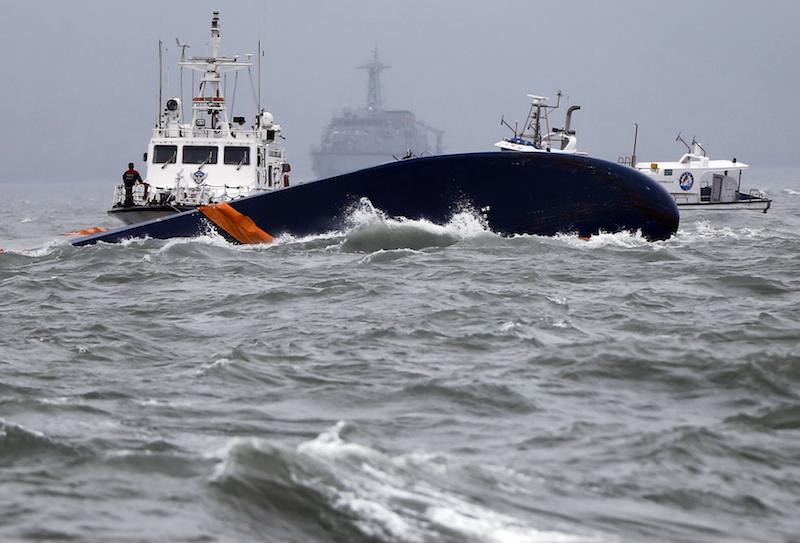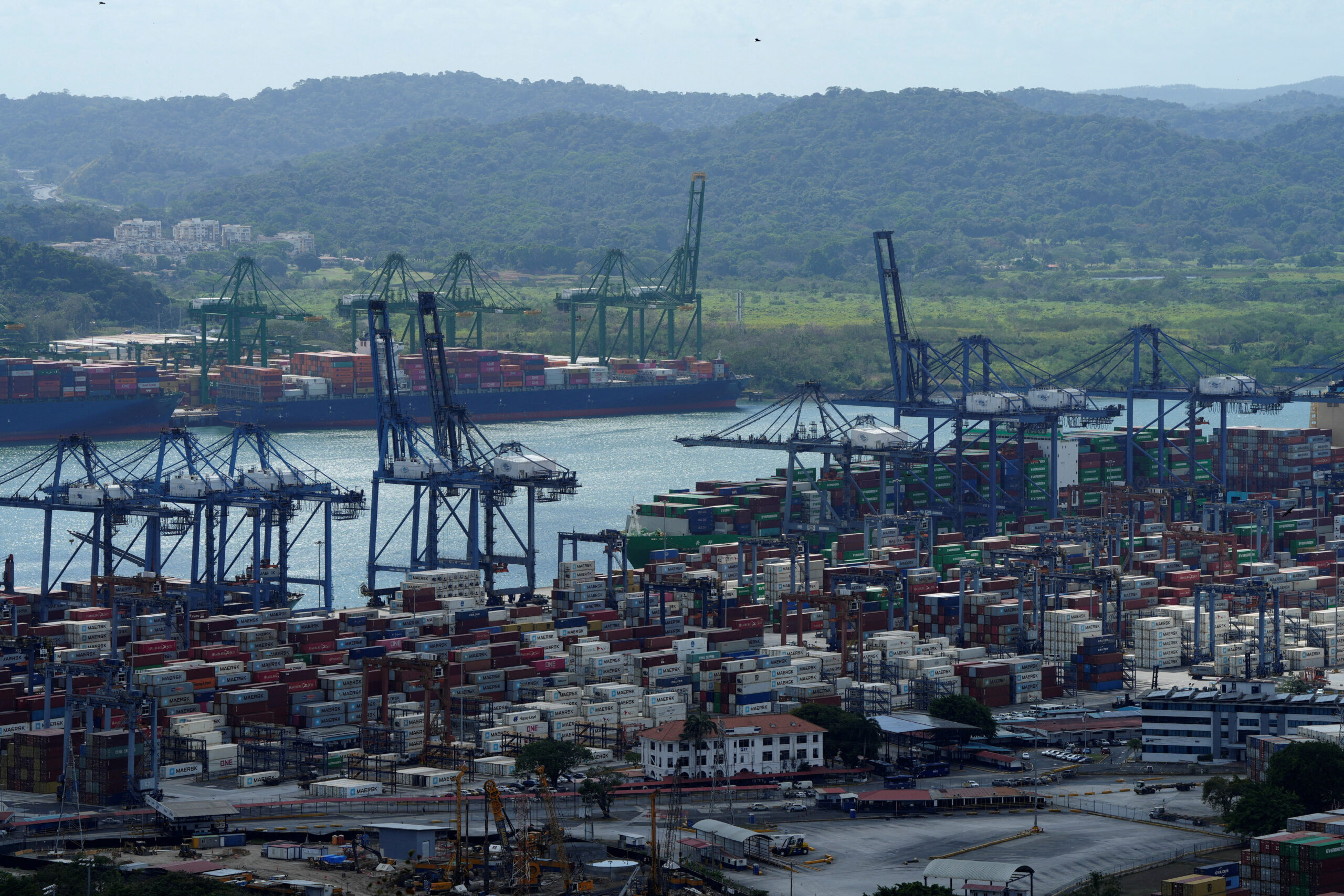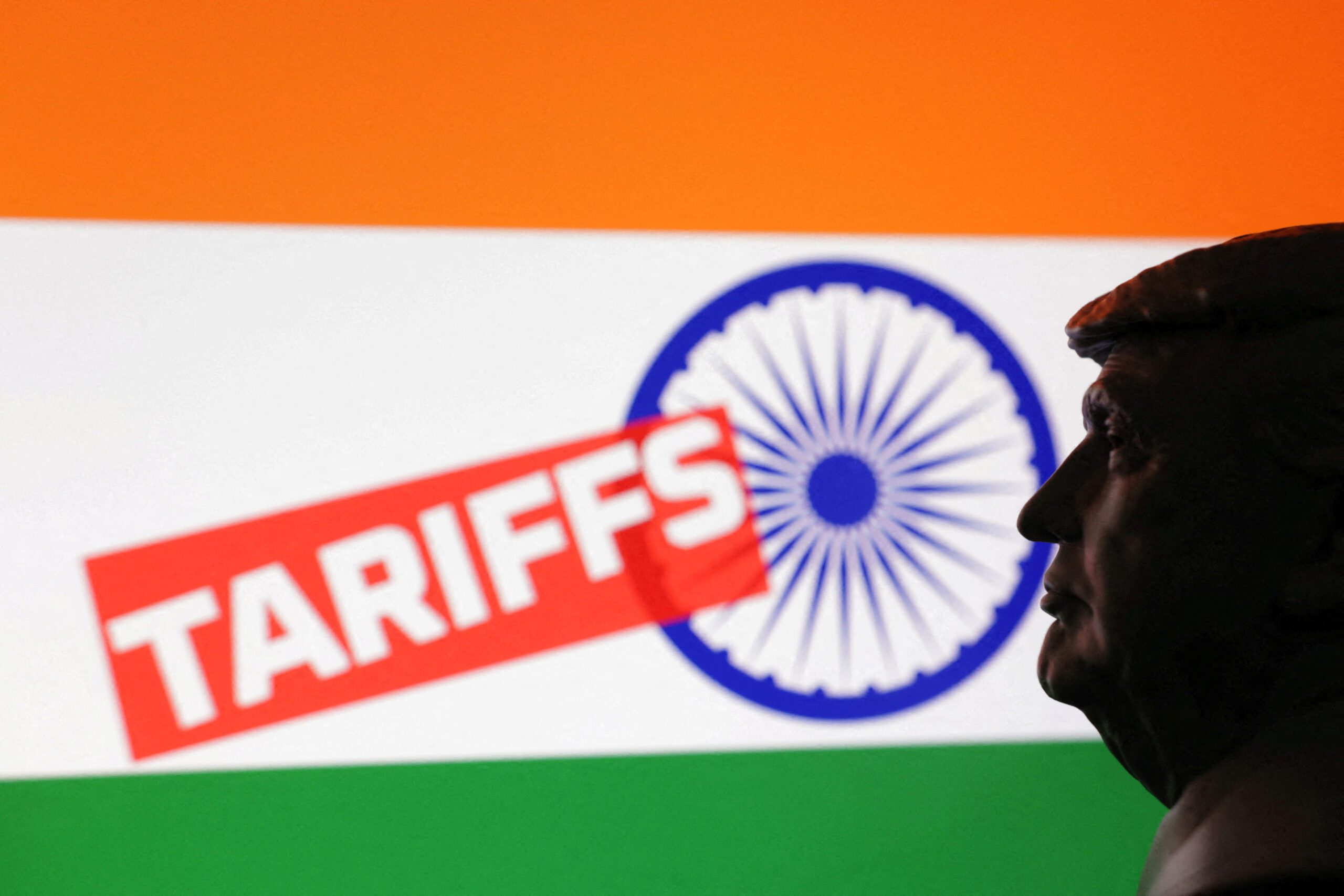Vessels involved in salvage operations are seen near the upturned South Korean Sewol ferry in the sea off Jindo April 17, 2014. REUTERS/Issei Kato

By Narae Kim
JINDO, South Korea, April 17 (Reuters) – Rescuers fought rising winds, strong waves and murky waters on Thursday as they searched for hundreds of people, mostly teenage schoolchildren, still missing after a South Korean ferry capsized more than 24 hours ago.
Coastguard, navy and some private divers were operating in waters at the site of the accident, about 20 km (12 miles) off the country’s southwestern coast. Earlier, rescue teams hammered on the hull of the upturned vessel, hoping for a response from anyone trapped inside, but did not hear anything, media reports said.
The vessel, carrying 475 passengers and crew, capsized on Wednesday during a journey from the port of Incheon to the holiday island of Jeju. Nine people were found dead and 179 had been rescued, according to the South Korean government, leaving 287 unaccounted for and possibly still trapped in the vessel.
RELATED: Sewol Becomes 100th Passenger Vessel Lost Since 2002
Grieving parents accused rescue teams of being slow to react and for lack of information, although government officials said that search efforts had continued through the night and was going ahead despite worsening conditions on Thursday.
“I am really angry with the government,” said Kwak Hyun-ok, whose daughter who was one of 340 children and teachers from one school on the vessel.
“There is no meaning to life without my daughter,” Kwak told Reuters.
The government said three cranes were being moved to the site of the accident and would arrive on Friday, and efforts were continuing to establish whether there were any survivors on the stricken vessel.
“We carried out underwater searches five times from midnight until early in the morning, but the strong currents and murky waters pose big obstacles,” Kang Byung-kyu, a minister for public security, told a news conference in the capital Seoul.
There is still no official explanation for the sinking, although the government has launched a formal inquiry. The ship, built in Japan 20 years ago, was following a well travelled route. Although the wider area has rock hazards and shallow waters, they were not in the immediate vicinity of its usual path.
State broadcaster YTN quoted investigation officials as saying the ship was off its usual course and had been hit by a veering wind which caused containers stacked on deck to shift.
One parent, Park Yung-suk, told Reuters at the port of Jindo where the rescue efforts are centred that she had seen the body of her teenage daughter’s teacher brought ashore earlier in the morning.
“If I could teach myself to dive, I would jump in the water and try to find my daughter,” she said.
DESPERATE SEARCH FOR ANSWERS
The relatively shallow waters of less than 50 meters (500 feet) were still highly dangerous for the 150 or so divers even under the best of weather conditions and time was running out quickly to find any survivors who may be trapped inside.
“The chances of finding people in there are not zero,” said David Jardine-Smith, secretary of the International Maritime Rescue Federation, adding however that conditions were extremely difficult.
“There is a lot of water current and silt in the water which means visibility is very poor and the divers are basically feeling their way around.”
The vessel was listing heavily to one side on Wednesday as passengers wearing life jackets scrambled into the sea and waiting rescue boats, according to television footage.
It sank in roughly two hours and witnesses and local media showed that just two life rafts from the ship successfully inflated and launched. Earlier reports said just one had inflated.
Witnesses told Korean media that the captain of the vessel, who is now being held by police, was one of the first to leave the stricken vessel.
Chonghaejin Marine Co Ltd, based in Incheon, issued a brief statement via local media apologising for the accident but has made no further comment.
As frustration grew, some parents of missing school children hired their own boat on Wednesday night. They appeared to blame the government of President Park Geun-hye and rescue officials for not making a big enough effort.
“Since the government refused to take us to the scene, 11 parents chipped in 61,000 won ($58.79) each to hire a boat and took a reporter and a diver. But there was no rescue operation going on,” said one father who declined to give his name.
According to a coastguard official in Jindo, the waters where the ferry capsized have some of the strongest tides off South Korea’s coast, meaning divers were prevented from entering the mostly submerged ship for several hours.
A company called Web Solus is providing an underwater drone free of charge to examine the interior of the vessel where survivors could be located.
“Families and rescuers have been just looking at the surface of the sea. We have to move fast and at least see some of the vessel under the water,” Ko Se-jin, the operator told Reuters.
Among those on the ship were two Chinese citizens, according to Chinese media, one Russian and two Filipinos. The Philippines citizens were safe, according to Korean authorities, but the whereabouts of the others was not known.
The ferry has a capacity of about 900 people and an overall length of 146 metres (480 feet). Shipping records show it was built in Japan in 1994.
What little hope now rests on whether the passengers inside would have been able to find themselves to air pockets, Jardine-Smith, the rescue experts said. “It is not impossible that people have survived, but, tragically, it’s very unlikely that many will have done.” ($1 = 1037.6500 Korean Won)
(Additional reporting by Jack Kim, Ju-Min Park, Choonsik Yoo, Meeyoung Cho, Kahyun Kang and James Pearson in SEOUL, Jungmin Jang in MOKPO, South Korea, and Jonathan Saul in LONDON; Writing by David Chance; Editing by Raju Gopalakrishnan)
© 2014 Thomson Reuters. All rights reserved.

 Join The Club
Join The Club











